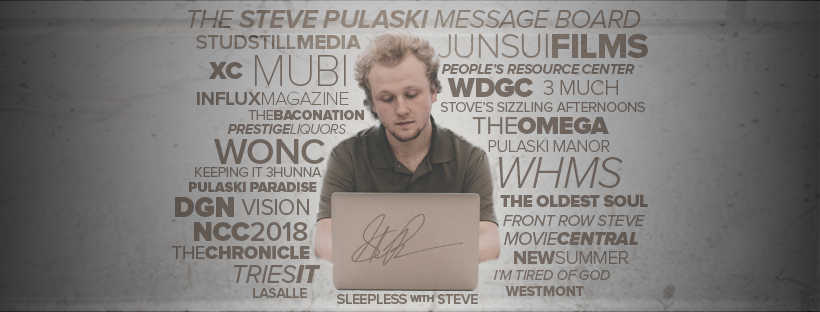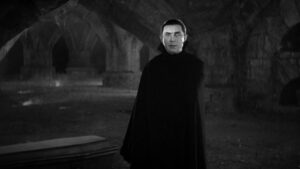Publication Date: 10-29-2025
Dracula (1931) review
Dir. Tod Browning
By: Steve Pulaski
Rating: ★★★
The horror genre didn’t begin with Tod Browning’s Dracula, but it was greatly revolutionized by its incarnation. Horror had existed as a largely expressionistic medium in countries like Germany for much of the early 1900s, but when Universal Pictures decide to put its hand in the monster-movie pot, horror would never be the same again.
1931 saw the beginning of the Great Depression and movie studios began hurting. Dracula‘s financial performance led to the lengthier viability of Universal Pictures’ studio and jump-started several other horror films known as the “Universal class monster movies.” With that being said, it also placed Hungarian actor Bela Lugosi on the map in addition to furthering the career of filmmaker Tod Browning.
Dracula is more than a curious piece of history in the regard that its atmosphere and acting still hold up today, but I think the appeal for viewers will be greatly diminished if they have seen the classic vampire picture Nosferatu from 1922. That film relied more on the sheer ugliness and daunting presence of the monster – with much material taken from the Bram Stoker novel. Dracula, on the contrary, uses the Broadway play as its source, retracting the ugly traits of Dracula to make him dashing rather than daunting. Suave rather than scary. And somewhat attractive rather than a vile monster.

Such decisions were completely creative on part of writer Garrett Fort and director Tod Browning (and the uncredited Karl Freund). I can admire and respect their visions but I can’t bring myself to prefer it to the 1922 classic. With Nosferatu being the first “Dracula” film (not counting the lost films of Russia from 1920 or the other lost film from Hungary called Dracula’s Death), it’s fair to say that a standard was unintentionally set. And having seen that masterpiece, seeing Dracula was a pleasant but ultimately a somewhat unrewarding experience.
The film revolves around the titular count who arrives in Transylvania on business. The residents fear the count and his ominous castle, and fear only continues to brew when he attempts to start a relationship with young Mina (Helen Chandler), the daughter of Dr. Seward (Herbert Bunston) who runs the nearby mental hospital.
Is it necessary to go further since the story is so classic? Moreover, Lugosi is brilliant here, with his elegant portrayal of a monster formerly seen as brooding and homely. Subtle movements Lugosi makes in the film feel like bold statements and whenever he speaks, the presence of a shivering echo always exists. Lugosi in addition to Karl Freund’s beautiful cinematography that guides us through Dracula’s spacious concubine with exceptional clarity and placement.
The look of the film — thanks to the professional touch of Freund in this particular film — is what Universal began to rely on with each of their monster films, which will probably get to be a redundant, overused statement as I visit many of these films within the next few days. Browning’s Dracula, as a whole, works as competent entertainment, but pales in comparison to its silent film predecessor that proves to be scary even as it approaches its one-hundredth year anniversary. Dracula‘s effectiveness has been demoted to that of a basic mood-setter, if anything.
My review of Frankenstein (1931)
My review of The Mummy (1932)
My review of The Invisible Man (1933)
My review of Bride of Frankenstein (1935)
My review of The Wolf Man (1941)
My review of Phantom of the Opera (1943)
Starring: Bela Lugosi, Helen Chandler, and Herbert Bunston. Directed by: Tod Browning.
About Steve Pulaski
Steve Pulaski has been reviewing movies since 2009 for a barrage of different outlets. He graduated North Central College in 2018 and currently works as an on-air radio personality. He also hosts a weekly movie podcast called "Sleepless with Steve," dedicated to film and the film industry, on his YouTube channel. In addition to writing, he's a die-hard Chicago Bears fan and has two cats, appropriately named Siskel and Ebert!


